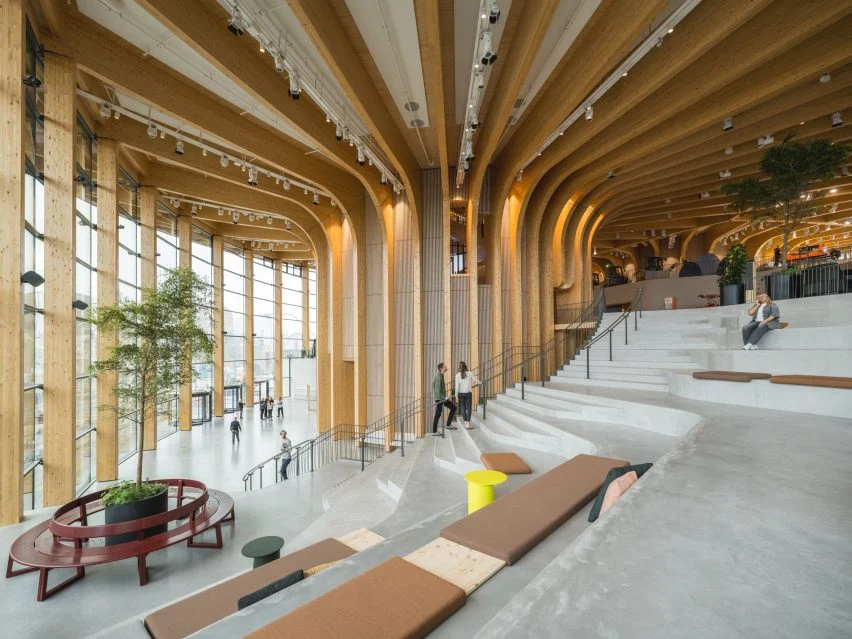The architecture company Henning Larsen created a tree-inspired ceiling structure at the World of Volvo exposition and events facility in Gothenburg, Sweden, by spreading out mass-timber columns.
For the Swedish automakers Volvo Cars and Volvo Group, Henning Larsen designed the 22,000-square-meter circular construction out of cross-laminated timber (CLT) and glued laminated timber (glulam).
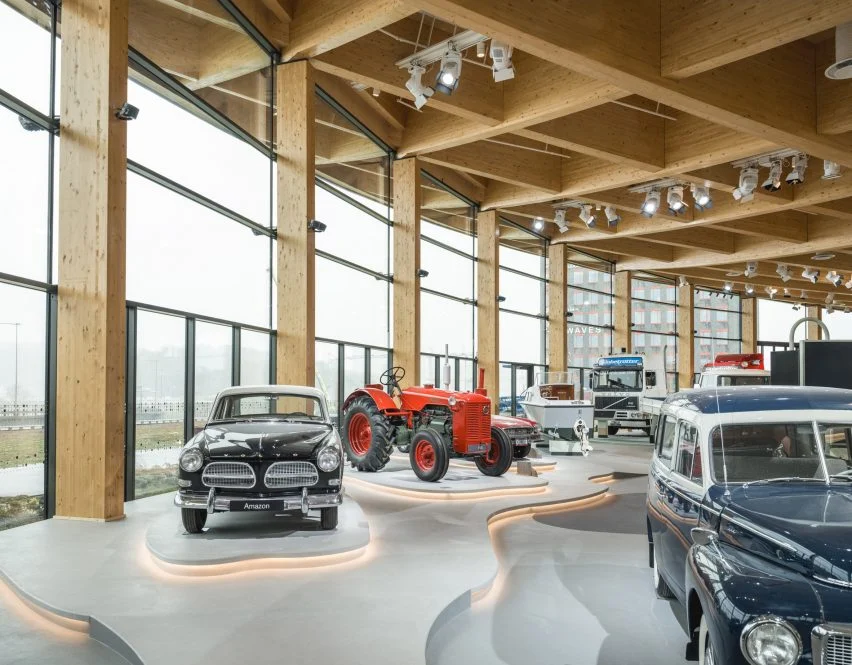
World of Volvo, which will open to the public on April 14 as part of Volvo’s centenary celebrations, has adaptable spaces for hosting exhibitions, conferences, seminars, and events that highlight the brand’s heritage.
Located in the heart of Gothenburg’s event zone, Henning Larsen wanted to design a facility that was both hospitable and had easy access to the outdoors.
Henning Larsen clustered mass-timber columns into three tubular forms that reference tree trunks, drawing inspiration from the Swedish countryside and trees. These forms include exhibition rooms and stairs that ascend to an upper level.
A glass facade encloses the building, while the columns rise and radiate outward to form the overhanging roof structure.
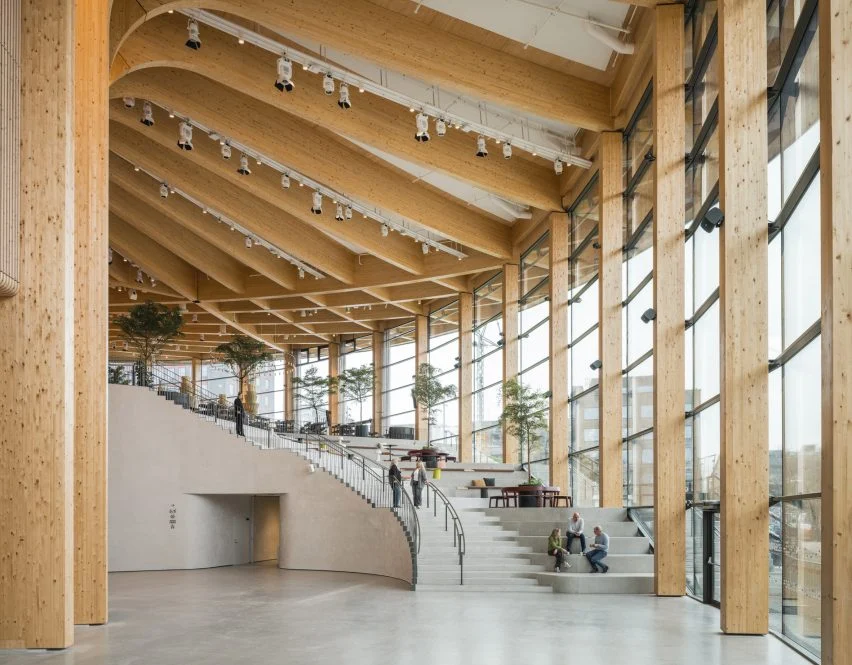
“The main timber structure forms three striking tree-trunk-like columns, fanning out to carry the entire load of the roof, enveloping visitors in a welcoming forest-like canopy,” said Henning Larsen.
“World of Volvo is designed around the Swedish concept of Allemansrätten, denoting a fundamental right to nature or ‘the freedom to roam’, offering an open invitation to the public,” added the studio’s associate design director Martin Stenberg Ringner.
“The building uses the timber structure to embody the regional landscape in both form and materiality,” he told Dezeen.
Along the glass facade is a broad stairway with deep seating steps.
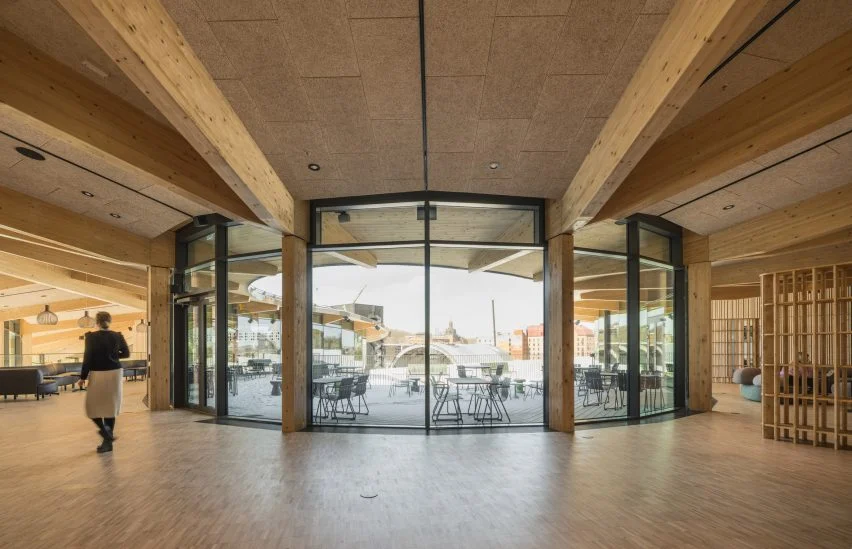
The circular ceiling is punctured by an organically curved top level with transparent sides. It has workstations, a restaurant, a bar, conference rooms and exhibition space.
The circular rooftop features a planted garden that is accessible to guests, aiming to establish a seamless transition between indoor and outdoor areas.
Ringner claims that the CLT slabs were manufactured in Sweden and that the Austrian spruce wood used for the glulam construction was acquired from there as well.
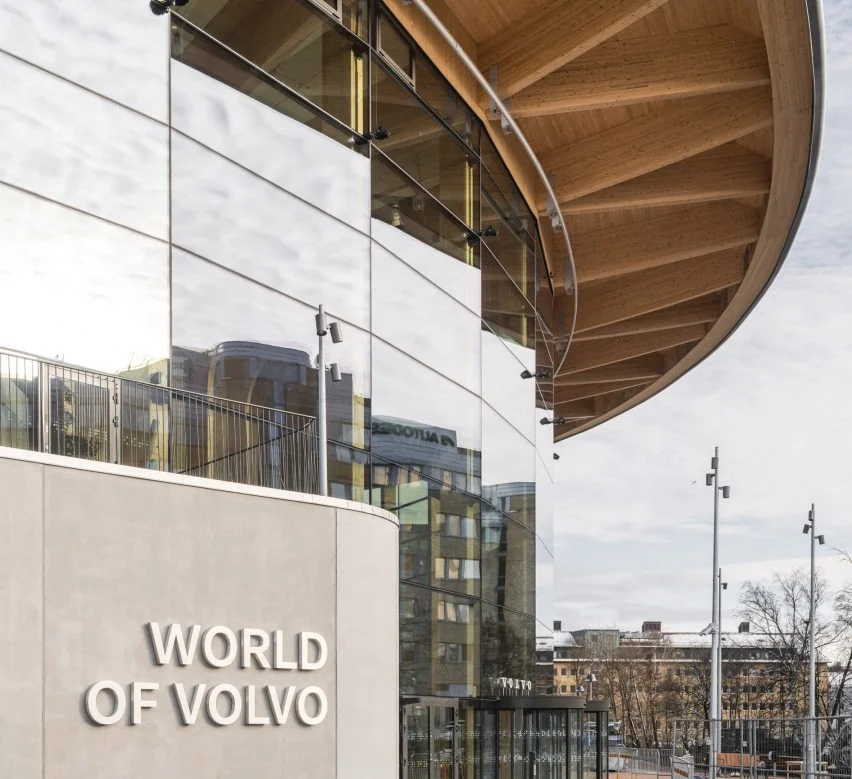
“There’s a strong link between organic materials and organic forms,” said Ringner. “We have found structural inspiration from nature and the two go hand in hand with great result.”
“The metaphor of the tree is derived from Volvo’s strong association with Nordic mythology, which is deeply rooted in the company’s Swedish heritage,” he continued.
“The tree is a powerful symbol of life, growth and connection, and this runs from the roots, through the layers of the tree and up to the treetops, which offer fresh air and views of the town of Volvo’s origin, Gothenburg.”
Other projects that Henning Larsen executed include a mass-timber university building on the Faroe Islands that pays homage to the area’s traditional villages and an atomic-science research complex with an underground proton accelerator.
DEZEEN

